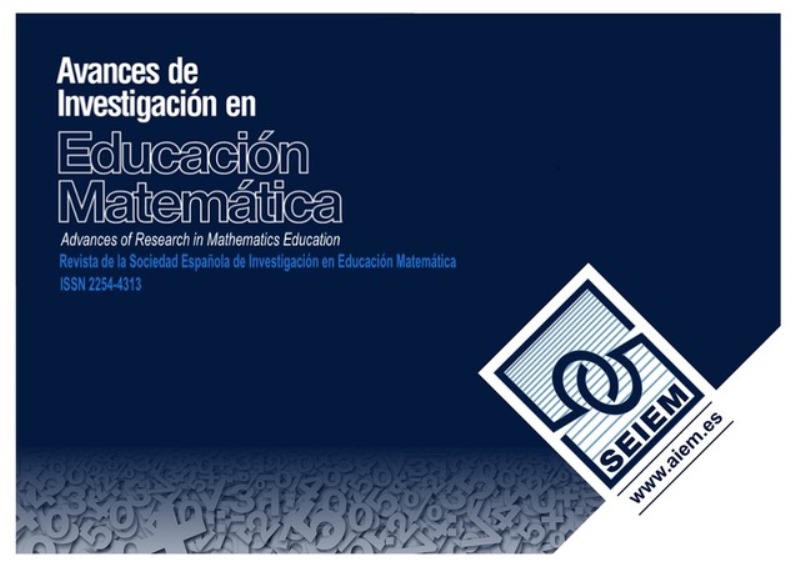Mathematical Connections in Preservice Secondary Mathematics Teachers’ Solution Strategies to Algebra Problems
DOI:
https://doi.org/10.35763/aiem25.6354Keywords:
Algebra, Mathematical connections, Solution strategies, Preservice secondary mathematics teachersAbstract
This study investigated the mathematical connections found in the solutions provided by 22 preservice secondary mathematics teachers to a set of algebra problems. Interest in, and research on, mathematical connections has gained prominence of the past decade. Here, we use the Extended Theory of Mathematical Connections or ETMC to explore the types of connections that this framework does and does not capture in the preservice teachers’ solutions. The ETMC surfaced four types of mathematical connections across four problems: ‘different representations’, ‘procedural’, ‘part-whole’ and ‘meaning’. The other types of connections defined in ETMC such as ‘reversibility’ or ‘feature’ were not found in our data, perhaps because of the specific problems that were used. Some mathematical connections were not highlighted when examining the solutions through the lens of ETMC (‘meaning’, ‘implication or if/then’ and modelling) addressing areas in which ETMC might be limited in its capacity to support researchers in identifying mathematical connections in different contexts.
Downloads
References
Australian Curriculum, Assessment and Reporting Authority (2022). The Australian Curriculum: Mathematics. Author.
Businskas, A.M. (2008). Conversations about connections: How secondary mathematics teachers conceptualize and contend with mathematical connections [Unpublished doctoral dissertation]. Simon Fraser University, Canada.
Common Core State Standards Initiative (2022). Standards for Mathematical Practice. Author.
Department for Education (2021). National curriculum in England: Mathematics programmes of study. Gov. UK.
Dogan, H., Shear, E., Contreras, A.F.G., & Hoffman, L. (2022). Linear independence from a perspective of connections. International Journal of Mathematical Education in Science and Technology, 53(1), 190-205. https://doi.org/10.1080/0020739X.2021.1961031
Dolores-Flores, C., Rivera-López, M.I., & García-García, J. (2019). Exploring mathematical connections of pre-university students through tasks involving rates of change. International Journal of Mathematical Education in Science and Technology, 50(3), 369-389. https://doi.org/10.1080/0020739X.2018.1507050
Eli, J.A., Mohr-Schroeder, M.J., & Lee, C.W. (2011). Exploring mathematical connections of prospective middle-grades teachers through card-sorting tasks. Mathematics Education Research Journal, 23, 297-319. https://doi.org/10.1007/s13394-011-0017-0
García-García, J., & Dolores-Flores, C. (2018). Intra-mathematical connections made by high school students in performing Calculus tasks. International Journal of Mathematical Education in Science and Technology, 49(2), 227-252. https://doi.org/10.1080/0020739X.2017.1355994
García-García, J., & Dolores-Flores, C. (2021). Exploring pre-university students’ mathematical connections when solving Calculus application problems. International Journal of Mathematical Education in Science and Technology, 52(6), 912-936. https://doi.org/10.1080/0020739X.2020.1729429
Hatisaru, V. (2022). Investigating secondary mathematics teachers’ analogies to function. International Journal of Mathematical Education in Science and Technology. https://doi.org/10.1080/0020739X.2022.2032440
Hatisaru, V. (2023). Mathematical connections established in the teaching of functions. Teaching Mathematics and its Applications: An International Journal of the IMA, 42(3), 207-227. https://doi.org/10.1093/teamat/hrac013
Ito-Hino, K. (1995). Students’ reasoning and mathematical connections in the Japanese classroom. In P. House, & A.F. Coxford (Eds.), Connecting mathematics across the curriculum (pp. 233-245). NCTM.
Kieran, C. (1992). The learning and teaching of school algebra. In D. A. Grouws (Ed.), Handbook of research on mathematics teaching and learning (pp. 390-419). Macmillan Publishing.
Musser, G.L., Burger, F.W., & Peterson, B.E. (2008). Mathematics for elementary teachers: A contemporary approach. Wiley.
Mhlolo, M.K. (2013 ). Mathematical connections of a higher cognitive level: A tool we may use to identify these in practice. African Journal of Research in Mathematics, Science and Technology Education, 16(2), 176-191. https://doi.org/10.1080/10288457.2012.10740738
Rodríguez-Nieto, C.A., Cervantes-Barraza, J.A., & Font, V.F. (2023). Exploring mathematical connections in the context of proof and mathematical argumentation: A new proposal of networking of theories. Eurasia Journal of Mathematics, Science and Technology Education, 19(5), em2264. https://doi.org/10.29333/ejmste/13157
Rodríguez-Nieto, C.A., Font, V.F., Borji, V., & Rodríguez-Vásquez, F.M. (2022) Mathematical connections from a networking of theories between extended theory of mathematical connections and onto-semiotic approach. International Journal of Mathematical Education in Science and Technology, 53(9), 2364-2390. https://doi.org/10.1080/0020739X.2021.1875071
Rodríguez-Nieto, C.A., Rodríguez-Vásquez, F.M., & Font, V.F. (2022). A new view about connections: the mathematical connections established by a teacher when teaching the derivative. International Journal of Mathematical Education in Science and Technology, 53(6), 1231-1256. https://doi.org/10.1080/0020739X.2020.1799254
Stacey, K., & MacGregor, M. (1999). Learning the algebraic method of solving problems. Journal of Mathematical Behavior, 18(2), 149-167. https://doi.org/10.1016/S0732-3123(99)00026-7
Stillman, G. (1998). The emperor’s new clothes? Teaching and assessment of mathematical applications at the senior level. In P. Galbraith, W. Blum, G. Booker, & D. Huntley (Eds.), Mathematical modelling: Teaching and assessment in a technology-rich world (pp. 243-253). Horwood.
Tripathi, N.P. (2008). Developing mathematical understanding through multiple representations. Mathematics Teaching in the Middle School, 13(8), 438-445. https://doi.org/10.5951/MTMS.13.8.0438
Downloads
Published
How to Cite
Issue
Section
License
Copyright (c) 2024 Vesife Hatisaru, Kaye Stacey, Jon Star

This work is licensed under a Creative Commons Attribution 4.0 International License.
The articles published in this journal are under a license Creative Commons: By 4.0 España from number 21 (2022).
Authors who publish with this journal agree to the following terms:
- Authors retain copyright and keep the acknowledgement of authorship.
- The texts published in this journal are – unless indicated otherwise – covered by the Creative Commons Attribution 4.0 international licence. You may copy, distribute, transmit and adapt the work, provided you attribute it (authorship, journal name, publisher) in the manner specified by the author(s) or licensor(s). The full text of the licence can be consulted here: http://creativecommons.org/licenses/by-nc/4.0.
- Authors are able to enter into separate, additional contractual arrangements for the non-exclusive distribution of the journal's published version of the work (e.g., post it to an institutional repository or publish it in a book), with an acknowledgement of its initial publication in this journal.
- Authors are permitted and encouraged to post their work online (e.g., in institutional repositories or on their website) prior to and during the submission process, as it can lead to productive exchanges, as well as earlier and greater citation of published work (See The Effect of Open Access).









